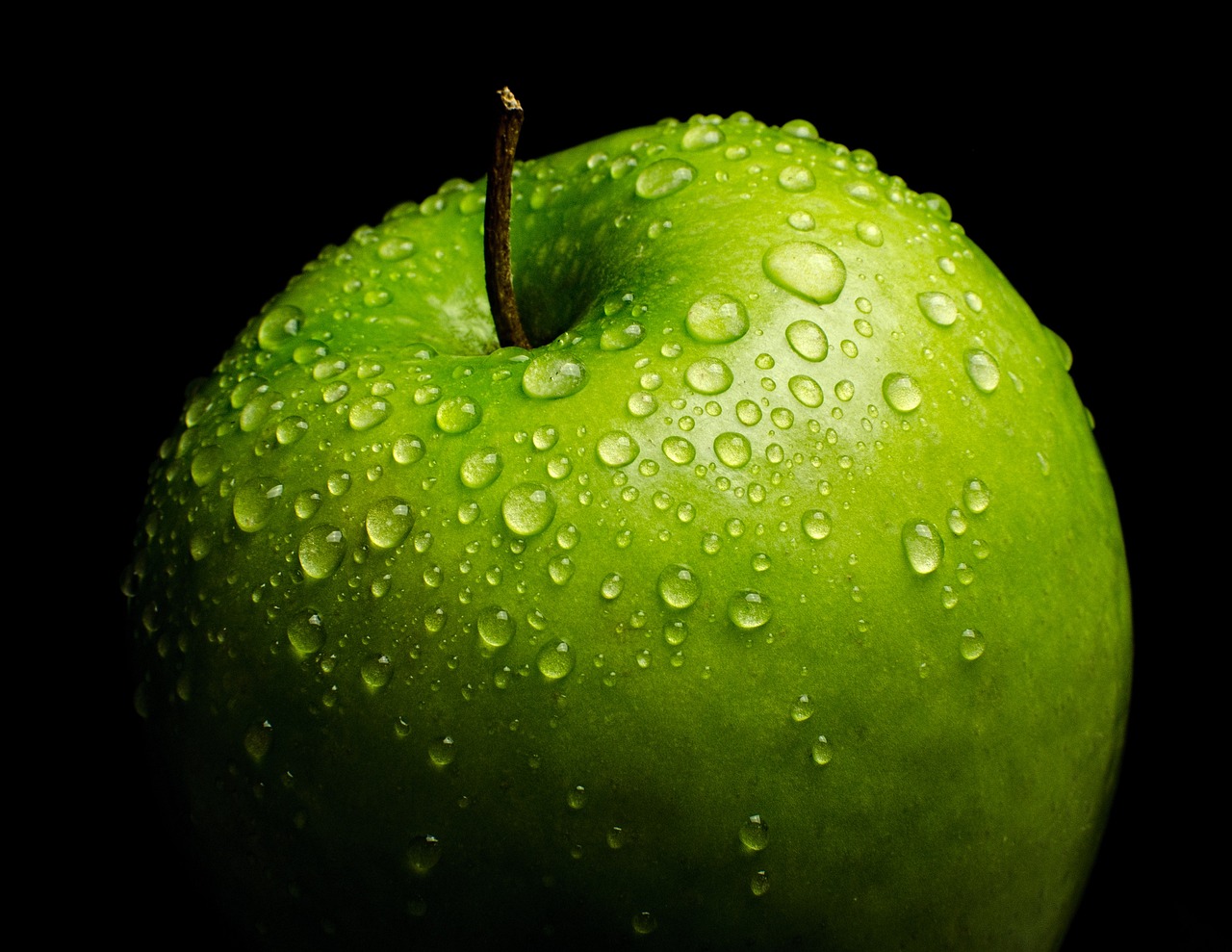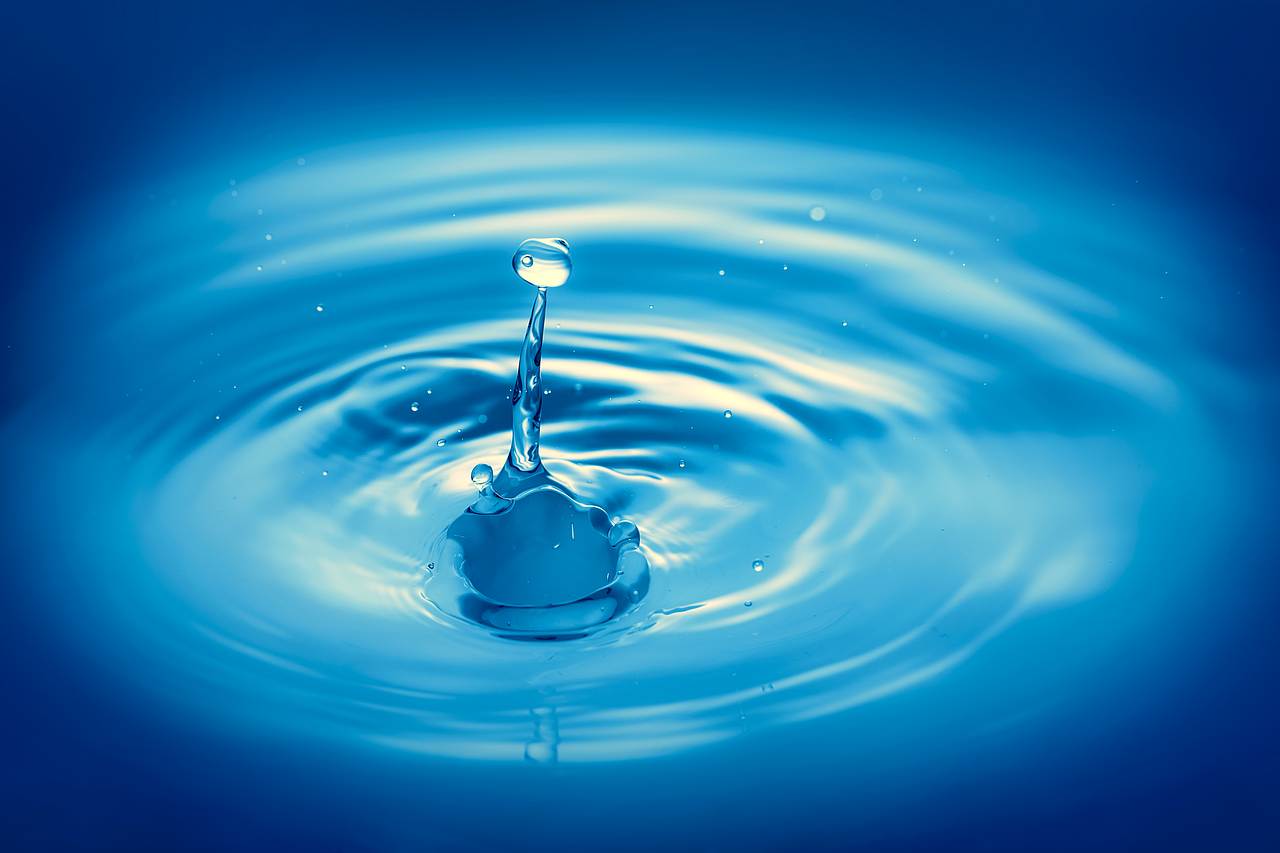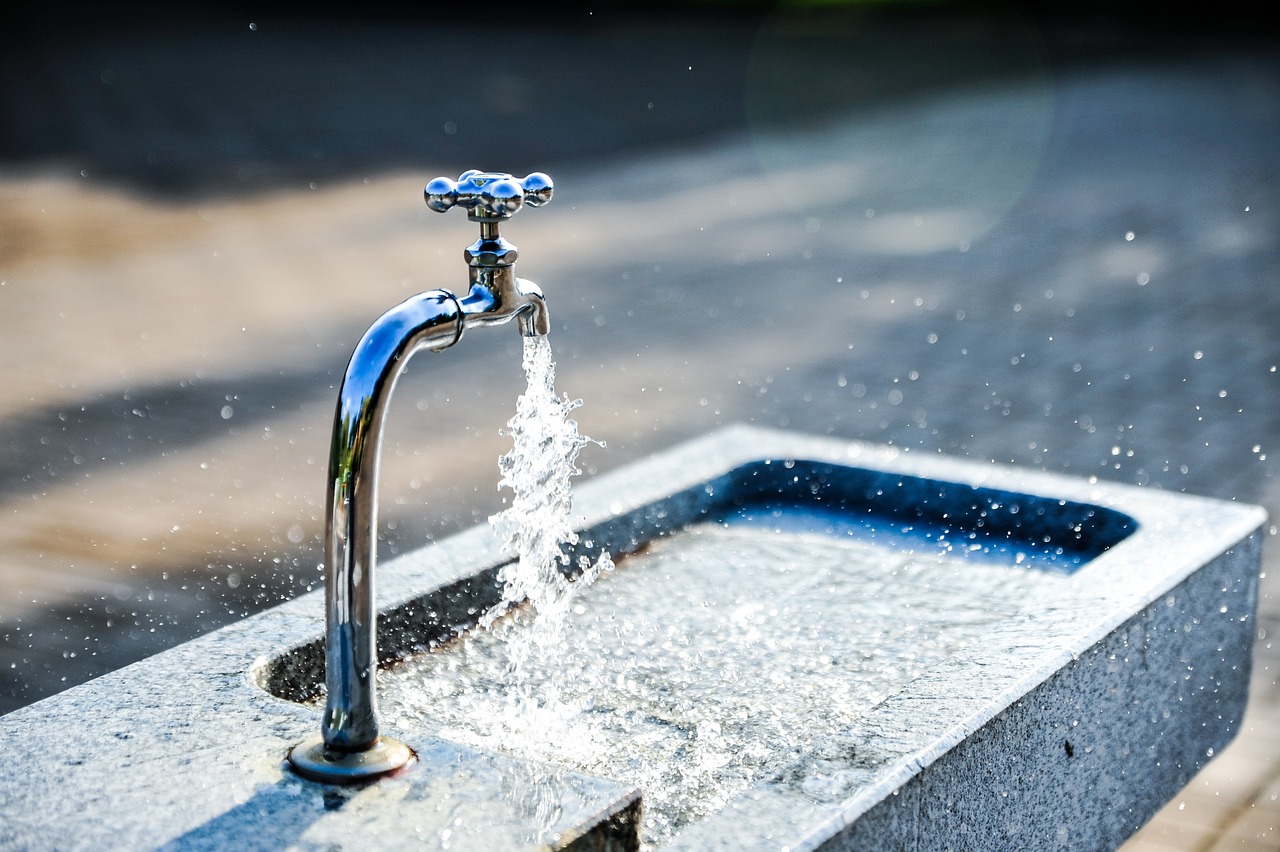This article delves into effective strategies for quickly losing water weight, including dietary modifications, exercise routines, and lifestyle changes. By implementing these practical tips, you can achieve your weight loss goals both safely and effectively.
Understanding Water Weight
Water weight refers to the excess fluid that the body retains, often influenced by factors such as diet, hormonal fluctuations, and medical conditions. Understanding the underlying causes of water retention can help you develop effective strategies to reduce it.
Common Causes of Water Retention
- Dietary Choices: High sodium intake is a primary contributor to water retention. Foods rich in sodium can cause the body to hold onto excess fluid.
- Hormonal Changes: Hormonal fluctuations, especially during menstruation, can lead to temporary water retention.
- Medical Conditions: Certain health issues, such as kidney disease or heart failure, can also result in increased water retention.
Effective Dietary Changes
Making specific dietary adjustments can significantly help in reducing water weight:
- Reduce Sodium Intake: Limiting salt in your diet can help decrease water retention. Opt for fresh foods instead of processed ones, which often contain high levels of sodium.
- Increase Potassium-Rich Foods: Foods like bananas, avocados, and spinach can help balance sodium levels and promote fluid balance.
- Stay Hydrated: Drinking adequate amounts of water can paradoxically help reduce water retention. When the body is well-hydrated, it is less likely to hold onto excess fluid.
Exercise and Physical Activity
Regular physical activity is crucial for shedding water weight:
- Cardiovascular Workouts: Engaging in cardio exercises such as running, swimming, or cycling can help you sweat out excess water.
- Strength Training: Building muscle through resistance training can enhance your body’s ability to regulate fluid balance.
Lifestyle Adjustments for Reducing Water Weight
Incorporating simple lifestyle changes can significantly impact water retention:
- Avoid Tight Clothing: Wearing loose-fitting clothes can improve circulation and reduce swelling caused by fluid retention.
- Manage Stress Levels: High stress can lead to hormonal imbalances that promote water retention. Techniques such as yoga, meditation, and deep-breathing exercises can help alleviate stress.
Conclusion
By understanding the factors that contribute to water retention and implementing these effective strategies, you can successfully shed excess water weight. Remember to consult with a healthcare professional before making significant changes to your diet or exercise routine to ensure a safe approach tailored to your individual needs.
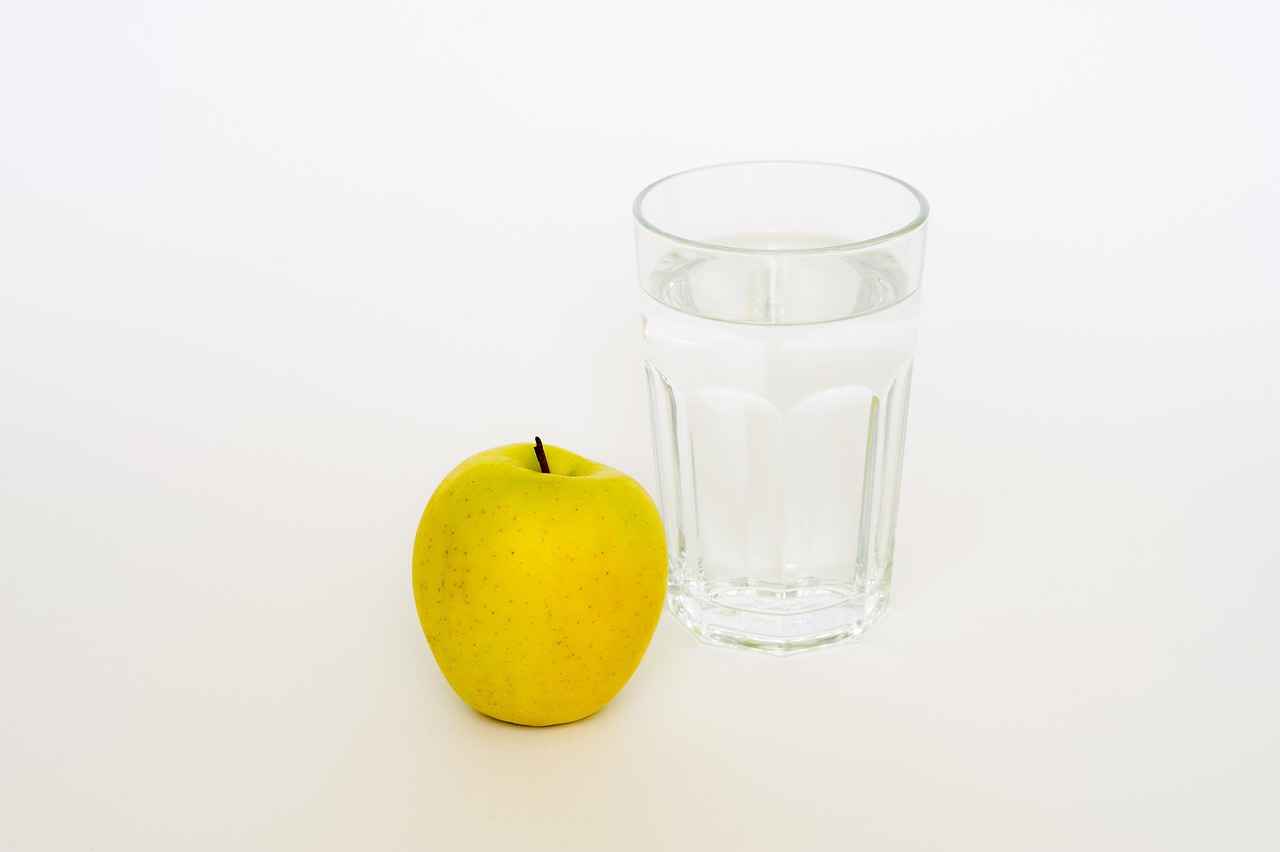
Understanding Water Weight
is crucial for anyone looking to manage their body composition effectively. Water weight refers to the excess fluid that is retained in the body, often leading to temporary weight fluctuations. This phenomenon can be influenced by a variety of factors, including dietary habits, hormonal changes, and lifestyle choices. By recognizing the causes of water retention, individuals can implement effective strategies to reduce it and achieve their health goals.
One of the primary causes of water retention is dietary choices. Consuming foods high in sodium can lead to an increase in water retention, as the body retains fluid to maintain a proper sodium balance. Additionally, high carbohydrate intake can also contribute to water weight. When carbohydrates are stored as glycogen, they bind with water, leading to increased fluid retention. Therefore, being mindful of sodium and carbohydrate consumption is essential for managing water weight.
Hormonal fluctuations also play a significant role in water retention. For instance, many women experience temporary water weight gain during their menstrual cycle due to hormonal changes. This can lead to feelings of bloating and discomfort. Understanding these hormonal patterns can help individuals manage their symptoms and reduce water retention during these times.
Another critical factor to consider is hydration. Ironically, drinking more water can actually help reduce water retention. When the body is well-hydrated, it is less likely to hold onto excess fluid. Therefore, ensuring adequate hydration can promote fluid balance and help alleviate the discomfort associated with water weight.
In addition to dietary changes, incorporating regular exercise into your routine can significantly impact water retention. Engaging in cardiovascular workouts, such as running or cycling, can help the body sweat out excess water. These activities not only promote fluid loss but also boost metabolism and improve overall health. Furthermore, strength training can enhance muscle mass, which improves the body’s ability to manage fluids effectively.
Making lifestyle adjustments can also be beneficial in reducing water weight. For example, wearing loose-fitting clothing can improve circulation and help prevent fluid retention. Additionally, managing stress levels through practices like yoga or meditation can help maintain hormonal balance, further reducing the likelihood of water retention.
In summary, understanding water weight and its causes is essential for anyone looking to manage their body effectively. By making informed dietary choices, staying hydrated, exercising regularly, and implementing lifestyle changes, individuals can successfully reduce water retention and improve their overall well-being. Recognizing the factors that contribute to water weight allows for targeted strategies that can lead to lasting results.

Common Causes of Water Retention
Water retention, often referred to as edema, is a common condition where the body retains excess fluid. This can lead to uncomfortable swelling and can be influenced by various factors. Understanding the is crucial for anyone looking to manage their weight effectively.
Several factors contribute to water retention, including dietary choices, hormonal changes, and certain medical conditions. Identifying these causes is essential for effectively managing water weight. Below, we explore these factors in detail.
The food we consume plays a significant role in how much water our bodies retain. High sodium intake is one of the most common culprits. When you consume too much salt, your body tends to hold onto water to maintain a balance in sodium levels. This can lead to noticeable swelling, especially in the extremities.
- Salt and Sodium: Reducing your salt intake can significantly alleviate water retention. Opt for fresh foods and herbs to enhance flavor without added sodium.
- Carbohydrate Consumption: Carbohydrates can also lead to increased water retention. When we eat carbs, our body stores glycogen, which binds with water. Cutting back on refined carbs can help mitigate this effect.
Hormonal fluctuations, particularly those related to the menstrual cycle, can cause temporary water retention. During this time, women may experience increased levels of progesterone, which can lead to fluid buildup. Understanding these changes can help manage symptoms effectively.
Certain medical conditions can also contribute to water retention. Heart failure, kidney disease, and liver disease are significant health issues that can cause the body to retain fluid. If you suspect that an underlying health condition is causing your water retention, it is crucial to consult a healthcare professional.
Some medications can also lead to water retention as a side effect. Common culprits include:
- Non-steroidal anti-inflammatory drugs (NSAIDs)
- Corticosteroids
- Blood pressure medications
If you notice swelling after starting a new medication, discuss this with your doctor to explore alternatives.
In addition to diet and health conditions, lifestyle choices can influence water retention. Physical inactivity can lead to poor circulation, causing fluid to accumulate in the lower extremities. Engaging in regular physical activity can help promote better circulation and reduce swelling.
Furthermore, stress can also play a role. High stress levels can lead to hormonal imbalances that promote water retention. Incorporating stress management techniques, such as yoga or meditation, can be beneficial.
In conclusion, understanding the common causes of water retention is vital for anyone looking to manage their weight effectively. By making informed dietary choices, being aware of hormonal changes, and addressing any underlying medical conditions, you can take proactive steps towards reducing water weight.
Dietary Influences
play a crucial role in managing water retention and overall fluid balance in the body. Understanding how various dietary components affect your body can empower you to make healthier choices and reduce unwanted water weight. This section delves into the significant factors related to diet that contribute to water retention, particularly focusing on sodium and carbohydrate intake.
One of the primary culprits behind water retention is high sodium intake. Sodium is an essential mineral that helps regulate fluid balance; however, consuming it in excess can lead to the body holding onto more water. This is because sodium attracts water, causing the body to retain fluid to maintain a balance. To combat this issue, it is advisable to monitor and reduce your sodium consumption. The American Heart Association recommends limiting sodium intake to less than 2,300 mg per day, which can significantly mitigate water retention.
In addition to sodium, carbohydrate consumption can also impact water weight. When you consume carbohydrates, your body stores them as glycogen in the liver and muscles. Each gram of glycogen binds with approximately 3-4 grams of water. Therefore, a high-carb diet can lead to increased water retention. To manage this effect, consider moderating your carbohydrate intake, especially refined carbs found in sugary snacks and white bread.
Furthermore, the type of carbohydrates you consume matters. Opting for complex carbohydrates, such as whole grains, fruits, and vegetables, can provide essential nutrients while minimizing excess water retention. These foods are also high in fiber, which aids digestion and can help reduce bloating.
Increased potassium intake is another effective strategy to counteract the effects of sodium. Potassium helps balance sodium levels in the body, promoting the excretion of excess fluid. Foods rich in potassium, such as bananas, spinach, and sweet potatoes, should be incorporated into your diet to help reduce water retention.
Moreover, staying well-hydrated is essential for managing water weight. It might seem counterintuitive, but drinking more water can actually help your body release stored fluids. When the body is dehydrated, it tends to hold onto water as a survival mechanism. Aim to drink at least 8-10 glasses of water daily to maintain optimal hydration levels.
Incorporating diuretic foods into your diet can also aid in reducing water retention. Foods such as cucumbers, asparagus, and watermelon naturally promote diuresis, helping your body eliminate excess fluids. Herbal teas, particularly those made from dandelion or green tea, can also support fluid balance.
Lastly, it is crucial to be mindful of processed foods, which often contain high levels of sodium and preservatives that contribute to water retention. Opting for fresh, whole foods can help maintain a balanced diet and promote overall health.
By understanding and adjusting your dietary influences, you can effectively manage water retention. Making conscious choices regarding sodium and carbohydrate intake, increasing potassium-rich foods, staying hydrated, and incorporating diuretic foods can lead to improved fluid balance and help you shed excess water weight.
Salt and Sodium
When it comes to managing water weight, understanding the role of salt and sodium is crucial. Excessive consumption of salt can lead to significant health issues, particularly in the form of increased water retention. This occurs as the body attempts to maintain a delicate balance of sodium levels by holding onto excess fluid. As a result, individuals may experience bloating and swelling, particularly in the extremities.
Reducing salt intake is an effective strategy for alleviating these symptoms. The American Heart Association recommends limiting sodium consumption to no more than 2,300 milligrams per day, which can help mitigate the risks associated with high sodium levels. Here are some practical tips to help you cut back on salt:
- Read Nutrition Labels: Always check food labels for sodium content. Many processed foods contain high levels of salt, even those that don’t taste salty.
- Choose Fresh Foods: Fresh fruits, vegetables, and meats are naturally low in sodium. Incorporating these into your diet can help reduce overall salt intake.
- Cook at Home: Preparing meals at home allows you to control the amount of salt added. Experiment with herbs and spices to enhance flavor without relying on sodium.
- Limit Fast Food: Fast food is notoriously high in salt. Opt for healthier alternatives when dining out or consider meal prepping to avoid the temptation.
In addition to reducing salt, it’s important to be aware of carbohydrate consumption. High-carb diets can lead to increased glycogen storage, which binds with water, further contributing to water retention. By moderating carbohydrate intake, you can also help your body release excess fluid.
Another factor to consider is hydration. While it may seem counterintuitive, drinking more water can actually help reduce water retention. When the body is adequately hydrated, it is less likely to hold onto excess fluid. Aim for at least 8-10 cups of water daily, adjusting based on activity levels and climate.
Furthermore, certain foods can help mitigate the effects of sodium. Foods rich in potassium, such as bananas, sweet potatoes, and spinach, can counteract sodium’s effects and promote a healthier fluid balance. Integrating these foods into your diet can be beneficial in managing water weight.
Lastly, consider the impact of lifestyle factors on water retention. Stress and hormonal changes can exacerbate fluid retention. Incorporating stress management techniques, such as yoga or meditation, can help regulate hormones and improve overall well-being.
In conclusion, understanding the relationship between salt, sodium, and water retention is vital for effective management of water weight. By making informed dietary choices, increasing hydration, and adopting healthy lifestyle habits, you can significantly reduce water retention and enhance your overall health.
Carbohydrate Consumption
plays a significant role in the body’s water retention levels. When we consume carbohydrates, they are converted into glycogen, which is stored in the liver and muscles. For every gram of glycogen stored, approximately 3 to 4 grams of water are also retained. This process is crucial for energy storage but can lead to increased water weight, especially when carbohydrate intake is high.
Understanding this relationship is essential for anyone looking to manage their weight effectively. By adjusting your carbohydrate intake, you can influence your body’s water retention levels. Here are some insights into how carbohydrate consumption affects water weight and practical tips to mitigate this effect:
- Limit Refined Carbohydrates: Foods high in refined sugars and flours, such as white bread, pastries, and sugary snacks, can cause rapid spikes in glycogen storage. Opt for whole grains instead, as they are digested more slowly and may help in maintaining a balanced water retention level.
- Monitor Portion Sizes: Keeping track of portion sizes can prevent excessive carbohydrate consumption. Consider using measuring cups or a food scale to ensure you are not overeating.
- Incorporate Low-Carb Days: Implementing low-carb days into your weekly routine can help your body deplete glycogen stores, leading to a reduction in water weight. This strategy can be particularly effective for those looking to shed water weight quickly.
- Focus on Fiber: High-fiber foods, such as fruits, vegetables, and legumes, not only provide essential nutrients but also help regulate digestion and can minimize water retention. They assist in maintaining a healthy balance of fluids in the body.
- Stay Hydrated: It may seem counterintuitive, but drinking more water can actually help reduce water retention. When the body is well-hydrated, it is less likely to hold onto excess fluids. Aim for at least 8 glasses of water a day, adjusting based on activity levels.
Additionally, understanding your body’s response to carbohydrates can help you make informed dietary choices. For instance, some individuals may find that they are more sensitive to carbohydrate intake, leading to greater water retention. Keeping a food diary can help identify patterns and inform adjustments.
Incorporating regular physical activity can also assist in managing water weight associated with carbohydrate consumption. Cardio exercises, such as running or swimming, can help deplete glycogen stores and promote sweating, which contributes to fluid loss. Strength training is equally beneficial, as it builds muscle mass, enhancing the body’s ability to manage glycogen and water balance.
Ultimately, the key to managing water weight lies in a balanced approach to carbohydrate consumption and overall lifestyle. By making conscious dietary choices and incorporating physical activity, you can effectively control water retention and achieve your health goals. Remember, it’s not just about cutting carbs; it’s about understanding how they interact with your body and making adjustments that support your well-being.
Hormonal Factors
Hormonal fluctuations play a significant role in the body’s fluid balance, particularly during the menstrual cycle. Many individuals experience temporary water retention due to these hormonal changes. Understanding the underlying mechanisms can empower you to manage the symptoms effectively and improve your overall comfort.
During the menstrual cycle, levels of hormones such as estrogen and progesterone fluctuate dramatically. These hormonal shifts can lead to an increase in water retention, often causing feelings of bloating and discomfort. This is primarily due to estrogen, which can enhance the body’s ability to retain sodium, leading to increased fluid retention.
In addition to estrogen, progesterone also impacts fluid balance. After ovulation, progesterone levels rise, which can contribute to water retention. This can be particularly pronounced in the days leading up to menstruation, when many individuals report experiencing symptoms of premenstrual syndrome (PMS), including swelling and bloating.
Recognizing these patterns is crucial for effective management. Here are some strategies to help mitigate the effects of hormonal fluctuations:
- Monitor Your Cycle: Keeping track of your menstrual cycle can help you anticipate when water retention may occur. This awareness allows you to prepare and adjust your diet and lifestyle accordingly.
- Hydration: Ironically, increasing your water intake can help reduce water retention. When your body is well-hydrated, it is less likely to hold onto excess fluid.
- Dietary Adjustments: Reducing sodium intake can significantly alleviate water retention. Focus on consuming whole foods and limiting processed items, which often contain high levels of salt.
- Incorporate Diuretic Foods: Certain foods, like cucumbers, watermelon, and asparagus, are natural diuretics that can help flush out excess fluids from your body.
Additionally, engaging in regular physical activity can help combat water retention. Exercise promotes circulation and encourages the body to release excess fluids. Activities such as yoga, walking, or cardiovascular workouts can be particularly beneficial.
Stress management is another vital factor. High stress levels can lead to hormonal imbalances that exacerbate water retention. Techniques such as meditation, deep breathing exercises, and mindfulness can help reduce stress and promote hormonal balance.
In conclusion, understanding the impact of hormonal fluctuations on water retention is essential for effective management. By adopting practical strategies such as dietary adjustments, staying hydrated, and engaging in regular exercise, individuals can alleviate the discomfort associated with these hormonal changes. Empowering yourself with knowledge about your body can lead to improved well-being and a more comfortable experience during your menstrual cycle.
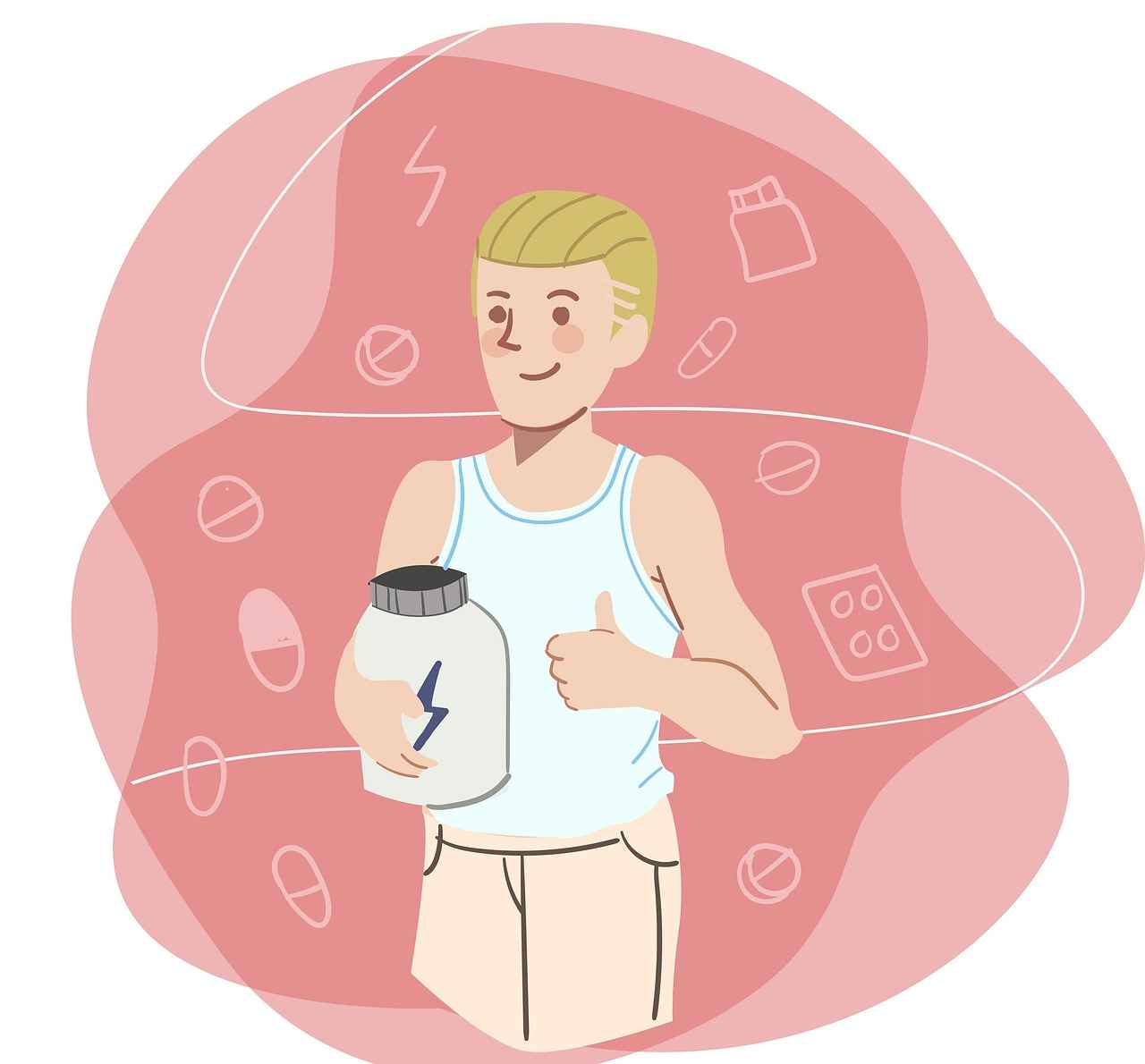
Effective Dietary Changes
Making specific dietary adjustments can significantly aid in reducing water weight quickly. By incorporating certain foods and beverages into your diet, you can promote diuresis and enhance fluid balance in the body. This section will delve into effective dietary changes that can help you achieve your goals.
Foods that naturally act as diuretics can help flush excess water from your system. Consider adding the following to your meals:
- Cucumbers: High in water content and low in calories, cucumbers are excellent for hydration and promoting urination.
- Asparagus: This vegetable contains asparagine, an amino acid that has diuretic properties.
- Watermelon: With its high water content, watermelon can help increase urine production and reduce bloating.
- Celery: Celery is not only hydrating but also contains compounds that can help reduce water retention.
Processed foods often contain high levels of sodium, which can lead to increased water retention. By minimizing your intake of these foods, you can help your body maintain a healthier fluid balance. Focus on whole, unprocessed foods, such as:
- Fresh fruits and vegetables
- Whole grains
- Lean proteins
It may seem counterintuitive, but drinking more water can actually help reduce water retention. When your body is adequately hydrated, it is less likely to hold onto excess fluids. Aim for at least 8-10 glasses of water daily, and consider herbal teas, which can also provide hydration and diuretic benefits.
Carbohydrates can lead to increased water retention as they bind with water when stored as glycogen. Reducing your carbohydrate intake, especially refined carbs, can help your body release stored water. Instead, focus on complex carbohydrates such as:
- Quinoa
- Brown rice
- Oats
Increasing your intake of potassium can help balance sodium levels and reduce water retention. Foods rich in potassium include:
- Bananas
- Sweet potatoes
- Spinach
These foods help counteract the effects of sodium and promote fluid balance.
Several herbs are known for their diuretic properties. Incorporating these into your diet may provide additional benefits:
- Dandelion: Often consumed as a tea, dandelion can help increase urine output.
- Green tea: Known for its antioxidant properties, green tea can also promote diuresis.
- Hibiscus: This flower can be brewed into tea and has been shown to help reduce water retention.
Reducing your salt intake is crucial for managing water retention. Aim to consume less than 2,300 mg of sodium per day. Opt for natural herbs and spices to flavor your food instead of salt.
By implementing these dietary changes, you can effectively reduce water weight and promote a healthier fluid balance in your body. Remember that consistency is key, and combining these dietary adjustments with regular exercise and lifestyle changes will yield the best results.
Increase Potassium Intake
When it comes to managing water retention, increasing potassium intake is a crucial strategy that can lead to significant improvements. Potassium is an essential mineral that plays a vital role in maintaining fluid balance within the body. It works by counteracting the effects of sodium, which is known to contribute to water retention. By incorporating potassium-rich foods into your diet, you can effectively promote a healthier fluid balance and reduce the likelihood of excess water weight.
What Foods Are High in Potassium?
- Bananas: Perhaps the most well-known source of potassium, bananas are not only delicious but also incredibly versatile. They can be eaten on their own or added to smoothies, oatmeal, and baked goods.
- Spinach: This leafy green is packed with nutrients, including potassium. It can be enjoyed raw in salads or cooked in various dishes, making it an easy addition to your meals.
- Sweet Potatoes: These root vegetables are rich in potassium and can be baked, mashed, or roasted for a nutritious side dish.
- Avocados: Known for their healthy fats, avocados also provide a substantial amount of potassium. They can be spread on toast, added to salads, or blended into smoothies.
- Oranges: Not only are they a great source of vitamin C, but oranges also contain potassium, making them a refreshing snack option.
How Does Potassium Help?
Potassium helps regulate fluid balance by promoting the excretion of sodium through urine. When sodium levels are high, the body tends to retain water to dilute it. By increasing potassium intake, you encourage your body to release excess sodium, which in turn helps to reduce water retention. This process is particularly beneficial for individuals who consume a high-sodium diet, as it can mitigate some of the negative effects associated with sodium overload.
Incorporating Potassium into Your Daily Diet
To reap the benefits of potassium, aim to include a variety of the aforementioned foods in your daily meals. For example, starting your day with a banana or adding spinach to your breakfast smoothie can set a positive tone for your potassium intake. Consider preparing a hearty salad with avocado and oranges for lunch, and enjoy a baked sweet potato with dinner. By diversifying your food choices, you not only enhance your potassium levels but also enjoy a range of flavors and nutrients.
Hydration and Potassium Balance
While increasing potassium is important, it should be paired with adequate hydration. Drinking enough water is essential for flushing out excess sodium and supporting kidney function. Ironically, staying well-hydrated can help your body release the water it tends to hold onto. Aim for at least eight glasses of water a day, adjusting based on your activity level and individual needs.
Consulting with Healthcare Professionals
Before making significant dietary changes, especially if you have underlying health conditions or are taking medications, it is advisable to consult with a healthcare professional. They can provide personalized recommendations based on your unique health profile and ensure that increasing potassium intake is safe and beneficial for you.
In conclusion, increasing potassium intake is a simple yet effective way to combat water retention. By incorporating potassium-rich foods into your diet and maintaining proper hydration, you can promote a healthier fluid balance and enhance your overall well-being.
Hydration is Key
Staying properly hydrated is essential for maintaining overall health, and it can play a surprisingly significant role in managing water retention. Many people may not realize that drinking adequate amounts of water can actually help the body release excess fluids rather than hoarding them. This might seem counterintuitive, but let’s delve into why hydration is key in this context.
When the body is deprived of water, it tends to enter a survival mode, leading to water retention. In this state, the body holds onto as much fluid as possible to prevent dehydration. This can create a cycle where the more dehydrated you are, the more water your body retains. By drinking more water, you signal to your body that it is safe to release the excess fluid it has been holding onto.
The amount of water each person needs can vary based on several factors, including age, weight, activity level, and climate. A common recommendation is to drink at least 8-10 cups (about 2-2.5 liters) of water daily. However, it’s important to listen to your body and adjust your intake based on your individual needs.
- Improved Metabolism: Adequate hydration can enhance metabolic processes, helping the body to efficiently utilize energy and manage weight.
- Enhanced Kidney Function: Proper hydration supports kidney function, allowing for better filtration and elimination of waste products.
- Reduced Bloating: Drinking more water can help alleviate feelings of bloating and discomfort associated with water retention.
In addition to drinking water, incorporating certain foods into your diet can also help maintain hydration levels. Consider adding the following hydrating foods:
- Watermelon: Composed of about 92% water, this fruit is not only refreshing but also hydrating.
- Cucumbers: With a high water content, cucumbers are perfect for staying hydrated and can be easily added to salads or eaten as snacks.
- Oranges: These citrus fruits are juicy and provide a good source of hydration along with vitamin C.
If you struggle to drink enough water throughout the day, here are some practical tips to help:
- Carry a Water Bottle: Having a water bottle with you at all times can serve as a reminder to drink.
- Set Reminders: Use your phone or a timer to remind you to take sips of water regularly.
- Infuse Your Water: Adding slices of fruits or herbs can make water more appealing and encourage you to drink more.
In summary, maintaining proper hydration is crucial for reducing water retention and promoting overall health. By understanding the importance of drinking enough water and incorporating hydrating foods into your diet, you can encourage your body to release excess fluids and feel more comfortable. Remember that everyone’s hydration needs are different, so find a routine that works best for you and stay consistent for optimal results.

Exercise and Physical Activity
are essential components in the journey to shed water weight quickly and effectively. Engaging in various forms of physical activity not only enhances your overall fitness but also plays a significant role in promoting fluid loss from the body.
When you engage in regular exercise, your body experiences an increase in circulation and metabolic rate. This heightened activity can lead to a natural process of sweating, which is one of the primary ways your body eliminates excess water. As you sweat, your body releases not only water but also electrolytes, helping to balance fluid levels.
Cardiovascular workouts are particularly effective for this purpose. Activities such as running, cycling, or swimming can significantly boost your heart rate, leading to increased perspiration. These exercises not only help in burning calories but also facilitate the expulsion of excess fluid. Incorporating at least 150 minutes of moderate-intensity cardio each week can yield noticeable results in reducing water weight.
In addition to cardio, strength training is an important aspect of exercise that should not be overlooked. Building muscle mass can improve your body’s efficiency in managing fluids. As you increase your muscle mass, your body becomes better at regulating water retention, leading to a more balanced fluid state. Aim for at least two days of strength training per week, focusing on all major muscle groups.
Moreover, incorporating high-intensity interval training (HIIT) can be an excellent strategy for shedding water weight. HIIT workouts alternate between short bursts of intense exercise and rest periods, which can lead to increased sweating and metabolic elevation. This type of training is not only effective for water loss but also for overall fat reduction.
Additionally, engaging in activities like yoga or Pilates can contribute positively to fluid balance. These practices help improve circulation and reduce stress levels, which can also mitigate water retention. The stretching and breathing techniques used in these exercises promote relaxation and can help alleviate hormonal imbalances that might contribute to fluid retention.
To maximize the benefits of your exercise routine, it is crucial to stay hydrated. While it may seem counterintuitive, drinking adequate amounts of water can actually help your body release retained fluids. When you are well-hydrated, your body is less likely to hold onto excess water, as it recognizes that there is no shortage of fluids.
In summary, integrating a variety of exercise forms into your routine—ranging from cardiovascular workouts to strength training and flexibility exercises—can significantly aid in shedding water weight. By enhancing circulation, promoting sweating, and building muscle, you can effectively manage fluid retention and improve your overall health.
Cardiovascular Workouts
Engaging in is one of the most effective strategies for shedding water weight. These exercises not only help you break a sweat but also significantly enhance your body’s metabolism and overall fluid balance. When you participate in activities such as running, cycling, or even brisk walking, your body begins to release excess water through perspiration, which can lead to noticeable weight loss.
One of the primary benefits of cardiovascular exercise is its ability to increase your heart rate, which in turn boosts your metabolic rate. A higher metabolism means that your body is more efficient at burning calories and utilizing energy, which can help expel retained fluids. As you engage in these activities, your body temperature rises, prompting you to sweat. This process not only helps to eliminate water weight but also promotes the release of toxins from your body.
Incorporating a variety of cardio exercises into your routine can keep things interesting and target different muscle groups. For instance, running can be a great way to engage your legs and core while also improving cardiovascular health. Alternatively, cycling is a low-impact option that is easier on the joints and can be done indoors or outdoors. Both activities can be adjusted in intensity, allowing you to tailor your workouts to your fitness level and goals.
Another effective cardio workout is swimming. This full-body exercise not only helps you burn calories but also provides resistance training, which can enhance muscle tone while promoting fluid loss. Swimming is particularly beneficial because it minimizes the impact on your joints, making it suitable for individuals of all fitness levels.
For those looking for a more structured approach, consider incorporating high-intensity interval training (HIIT) into your routine. HIIT involves alternating between short bursts of intense activity and periods of rest or lower-intensity exercise. This method has been shown to be highly effective for burning calories and can lead to greater fluid loss in a shorter amount of time.
Moreover, staying consistent with your cardiovascular workouts is key. Aim for at least 150 minutes of moderate aerobic activity or 75 minutes of vigorous activity per week, as recommended by health authorities. This consistency not only aids in reducing water weight but also contributes to overall health and well-being.
In addition to structured workouts, incorporating physical activity into your daily routine can further enhance fluid balance. Simple changes, such as taking the stairs instead of the elevator or going for a walk during your lunch break, can add up over time and help you maintain a healthy weight.
Lastly, remember that hydration plays a crucial role in managing water weight. Ironically, drinking adequate amounts of water can help your body release excess fluids. When your body is well-hydrated, it is less likely to retain water, thus counteracting the effects of sodium and other factors that contribute to bloating and water retention.
In conclusion, are an essential component of any fitness regimen aimed at shedding water weight. By incorporating a variety of exercises and maintaining consistency, you can effectively promote fluid balance, improve your overall health, and achieve your fitness goals.
Strength Training Benefits
When it comes to managing water weight, strength training emerges as a powerful ally. This form of exercise not only enhances muscle mass but also plays a crucial role in regulating fluid balance within the body. By incorporating strength training into your routine, you can experience significant benefits that extend beyond mere aesthetics.
One of the primary advantages of strength training is its ability to build muscle. Muscle tissue is metabolically active, meaning it requires more energy to maintain compared to fat. This increased metabolic rate can lead to a more efficient management of body fluids. As you build muscle, your body becomes better equipped to handle excess water, helping to reduce bloating and water retention.
Moreover, strength training stimulates the production of hormones that aid in fluid regulation. For instance, the release of growth hormone during resistance workouts can enhance the body’s ability to balance electrolytes, further promoting fluid loss. This hormonal response is particularly beneficial for those struggling with water retention due to hormonal fluctuations.
In addition to hormonal benefits, strength training can improve overall circulation. Enhanced blood flow helps to flush out excess fluids and toxins from the body. When you engage in strength exercises, your heart pumps more blood to your muscles, which can assist in reducing swelling and discomfort associated with water retention.
Another key aspect of strength training is its ability to boost confidence and mental well-being. As you see improvements in your strength and physique, your self-esteem often increases, encouraging you to maintain a healthier lifestyle overall. This positive mindset can lead to better dietary choices and a more consistent exercise routine, further aiding in the management of water weight.
To maximize the benefits of strength training for reducing water weight, consider the following tips:
- Consistency is Key: Aim for at least two to three strength training sessions per week. This frequency allows your body to adapt and grow stronger.
- Focus on Compound Movements: Incorporate exercises that work multiple muscle groups, such as squats, deadlifts, and bench presses. These movements can increase muscle mass more effectively.
- Stay Hydrated: Ironically, drinking water can help reduce water retention. Proper hydration supports muscle function and recovery.
- Monitor Sodium Intake: A diet high in sodium can counteract the benefits of strength training. Aim to balance your electrolytes with potassium-rich foods.
In conclusion, integrating strength training into your fitness regimen can significantly aid in reducing water weight. By enhancing muscle mass, improving hormonal balance, and boosting circulation, strength training offers a comprehensive approach to managing fluid retention. Embrace this powerful tool not just for weight loss, but for overall health and well-being.
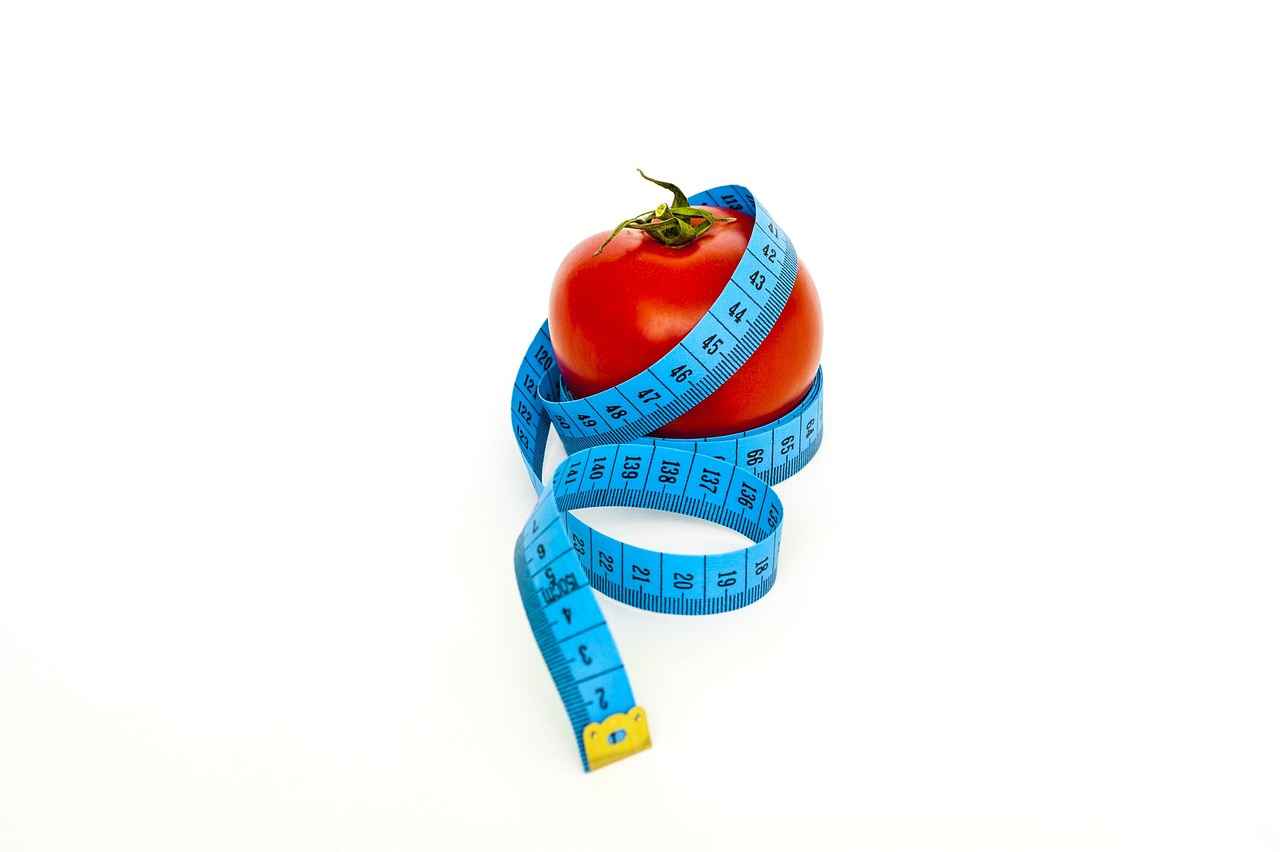
Lifestyle Adjustments for Reducing Water Weight
Making small lifestyle adjustments can significantly impact water retention and overall health. These changes, while seemingly minor, can lead to substantial improvements in your well-being and help you feel lighter and more energized. Below are some effective strategies to consider:
- Stay Hydrated: It may sound counterintuitive, but drinking more water can actually help reduce water retention. When your body is well-hydrated, it doesn’t feel the need to hold onto excess fluid. Aim for at least 8 glasses of water a day, and consider incorporating hydrating foods like cucumbers and watermelon into your diet.
- Limit Sodium Intake: High sodium levels can cause your body to retain water. Reducing your salt intake can lead to a noticeable decrease in water weight. Opt for fresh foods over processed ones, and use herbs and spices for flavor instead of salt.
- Incorporate Potassium-Rich Foods: Foods that are high in potassium, such as bananas, avocados, and sweet potatoes, can help balance sodium levels and promote fluid balance. Increasing your potassium intake can help your body release excess water.
- Regular Physical Activity: Engaging in regular exercise not only helps with weight management but also promotes better circulation and fluid balance. Incorporate both cardiovascular and strength training exercises into your routine for maximum benefits.
- Avoid Tight Clothing: Wearing loose-fitting clothing can improve circulation and help prevent fluid retention. Tight clothes can restrict blood flow and lead to swelling, especially in the lower extremities.
- Manage Stress: High stress levels can lead to hormonal fluctuations that promote water retention. Techniques such as yoga, meditation, and deep breathing can help lower stress and improve your body’s fluid management.
- Get Enough Sleep: Quality sleep is crucial for overall health, including fluid balance. Aim for 7-9 hours of sleep per night to help your body regulate hormones that control fluid retention.
By implementing these simple lifestyle changes, you can effectively manage water retention and enhance your overall health. These adjustments not only help in shedding excess water weight but also contribute to a more balanced and healthier lifestyle.
Remember, consistency is key. Make these changes a regular part of your routine, and you’ll likely notice improvements in how you feel and look. Always consult with a healthcare professional before making significant changes to your diet or exercise regimen, especially if you have underlying health conditions.
Avoiding Tight Clothing
is an essential practice for anyone looking to manage water retention effectively. Tight garments can significantly hinder blood circulation, leading to various health issues, including swelling and discomfort. When clothing fits too snugly, it can compress blood vessels and impede the natural flow of blood throughout the body. This restriction can result in fluid buildup in certain areas, particularly the extremities such as the legs and feet.
Moreover, wearing tight clothing can create an environment that promotes fluid retention. As the body struggles to maintain adequate circulation, it may hold onto excess fluid as a compensatory mechanism. This can lead to a cycle where the more you wear restrictive clothing, the more fluid your body retains. Therefore, opting for looser-fitting garments can be a simple yet effective strategy to enhance blood flow and reduce swelling.
In addition to improving circulation, looser clothing allows for better air circulation around the skin, which can help regulate body temperature and reduce perspiration. When you wear breathable fabrics that fit comfortably, your body can function more efficiently, leading to a decrease in water retention. Fabrics like cotton and linen are excellent choices, as they are not only comfortable but also allow for better airflow.
Furthermore, consider the impact of tight clothing on your overall well-being. The discomfort caused by restrictive garments can lead to increased stress levels, which may further exacerbate water retention. Stress triggers the release of hormones like cortisol, which can lead to fluid retention. By wearing comfortable clothing, you can foster a more relaxed state, reducing stress and its associated effects on your body.
It’s also important to note that certain activities may require specific types of clothing. For instance, during exercise, wearing tight-fitting athletic wear may be beneficial for support and performance. However, it’s crucial to ensure these garments are not overly constrictive. After your workout, transitioning back to looser clothing can help your body recover and maintain proper circulation.
In summary, avoiding tight clothing is a straightforward yet effective approach to managing water retention. By choosing looser-fitting and breathable garments, you can enhance blood flow, reduce swelling, and promote overall health. Remember, comfort is key; when your body feels good, it functions better, leading to a healthier balance of fluids and improved well-being.
Managing Stress Levels
Managing stress levels is crucial for overall health, especially when it comes to combating water retention. High stress can lead to hormonal imbalances, particularly involving cortisol, which can promote fluid retention in the body. Understanding the connection between stress and water weight is essential for anyone looking to shed those extra pounds of water weight quickly and effectively.
When the body is under stress, it produces more cortisol, a hormone that triggers the body to retain sodium and water. This physiological response is a remnant of our evolutionary past, where stressors often indicated a need for survival. However, in today’s fast-paced world, chronic stress can lead to persistent water retention, making it difficult to achieve your desired weight.
To effectively manage stress and mitigate its effects on water retention, consider incorporating the following strategies into your daily routine:
- Practice Mindfulness and Meditation: Engaging in mindfulness exercises and meditation can significantly reduce stress levels. These practices help calm the mind and promote relaxation, allowing the body to return to a balanced state.
- Engage in Regular Physical Activity: Exercise is an excellent way to manage stress. Activities such as yoga, running, or even brisk walking can release endorphins, which improve mood and decrease stress levels. Furthermore, physical activity helps promote fluid loss through sweating.
- Establish a Sleep Routine: Lack of sleep can exacerbate stress and hormonal imbalances. Aim for 7-9 hours of quality sleep each night. Establishing a calming bedtime routine can improve your sleep quality, further helping to manage stress.
- Connect with Nature: Spending time outdoors can have a calming effect on the mind and body. Nature walks or outdoor activities can help reduce stress levels and promote overall well-being.
- Social Support: Connecting with friends and family can provide emotional support and help alleviate stress. Engaging in conversations and sharing experiences can promote feelings of belonging and reduce feelings of isolation.
Incorporating these practices into your daily life can lead to a significant reduction in stress levels, which in turn can help alleviate water retention. Remember that managing stress is not a one-time effort but a continuous process that requires dedication and commitment.
Additionally, consider keeping a journal to track your stress levels and identify triggers. This awareness can empower you to take proactive steps to manage stress before it becomes overwhelming. You might also explore relaxation techniques such as deep breathing exercises, progressive muscle relaxation, or guided imagery to further enhance your stress management toolkit.
In conclusion, managing stress is not only vital for mental health but also plays a significant role in physical health, particularly in reducing water retention. By implementing these strategies, you can create a healthier lifestyle that supports both emotional and physical well-being. Remember, a balanced approach to stress management can lead to a happier, healthier you.
Frequently Asked Questions
- What is water weight?
Water weight is the excess fluid that your body retains, often due to factors like high sodium intake, hormonal changes, or certain medical conditions. It can fluctuate and is usually temporary.
- How can I quickly lose water weight?
You can shed water weight by making dietary changes, such as reducing sodium intake and increasing potassium-rich foods, staying hydrated, and engaging in regular exercise, especially cardio workouts.
- Does drinking more water help with water retention?
Yes! Ironically, drinking more water can help your body release the excess fluid it’s holding onto. Staying well-hydrated encourages proper fluid balance.
- Can stress affect water retention?
Absolutely! High stress levels can lead to hormonal imbalances that promote water retention. Managing stress through techniques like yoga or meditation can help alleviate this issue.
- Are there specific foods that can help reduce water weight?
Yes! Foods rich in potassium, like bananas and spinach, can help counteract sodium effects. Additionally, incorporating diuretic foods like cucumber and watermelon can promote fluid loss.
